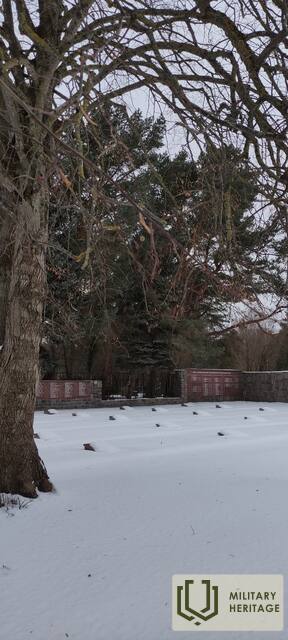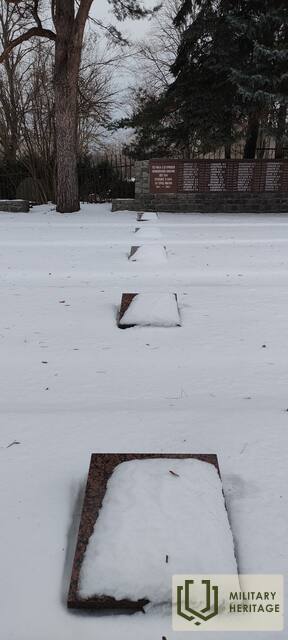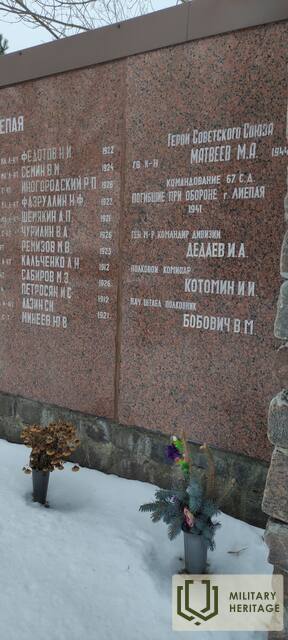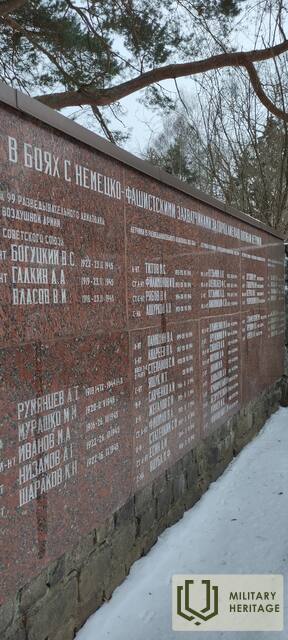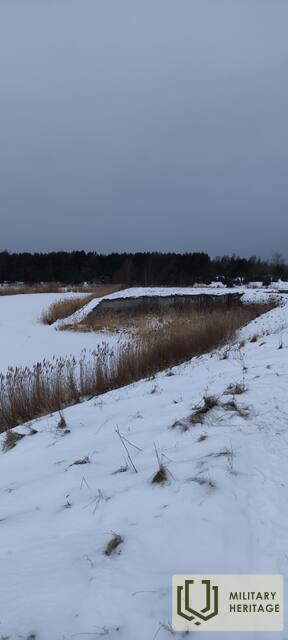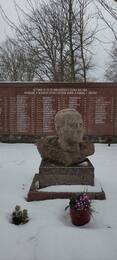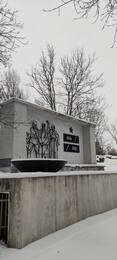67. Punaarmee laskurdiviisi ülema N. Dedajevi monument
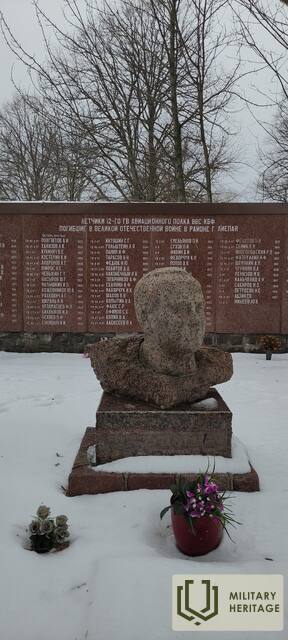
Lõunakindlusest põhja pool asub Liepāja suurim kalmistu - Keskkalmistu. Kalmistu lõunaosas asub Punaarmee kalmistu, kuhu on ümber maetud Liepāja lähistel hukkunud nõukogude sõdurid, sealhulgas 67. laskurdiviisi ülem kindralmajor Nikolai Dedajev, kes juhtis Liepāja kaitset 1941. aasta juunis.
24. juuni 1941 varahommikul algas Saksa armee 291. jalaväediviisi 505. jalaväerügemendi üksuse rünnak kolonel K. Lomeijeri juhtimisel Liepāja kindluse keskmise kindluse lähistel, pärast linna vallutamist. Priekule ja Grobiņa. Esimene rünnak oli ebaõnnestunud ja 25. juuni hommikuks oli kavandatud uus rünnak. Sel ajal Kesklinnusest loodes 67. laskurdiviisi komandopunktis, mis asus Liepāja kindluse nr. 8 (praegu Grīzupes tänav), sai pihta mitu Saksa suurtükimürsku ja vigastada kindralmajor N. Dedajev. N. Dedajev suri mereväehaiglas ja maeti vendade kalmistu lähedale. Ta maeti ümber Tosmare kalmistule 1947. aastal ja 1977. aastal Lõunalinnuse lähedal asuvale Keskkalmistule. Vaatamata Nõukogude kaotustele ei õnnestunud Saksa üksustel 25. juunil läbi murda ka Liepāja linnuse valli. Lahingud Liepajas lõppesid 27. ja 28. juunil, kui Nõukogude üksused üritasid põhja poole murda.
Keskkalmistu lõunaosas on Punaarmee sõdurite kalmistul kindralmajor N. Dedajevi monument.
Valitsus toetab 69 Nõukogude ja natsirežiimi ülistava monumendi lammutamist / Artikkel (lsm.lv)
Läti Vabariigi territooriumil Nõukogude ja natsirežiimi ülistavate objektide loetelu (likumi.lv)
Seotud ajajoon
Seotud teemad
Seotud objektid
Liepaja kindluse lõunakindlus ja Punaarmee 67. laskurdiviisi komandöri N. Dedajevi mälestusmärk
Liepaja lõunakindlus asub Liepaja edelaosas, Klaipeda tänava ja ranna vahel.
Keiser Aleksander III sadama kaitsmiseks lõunast kavandati linnus kahe kilomeetri kaugusele linna lõunapiirist. Linnus pidi asuma Liepaja järve ja mere vahel, Gromi jõe väljavoolust lääne pool, tugevdatud raudbetoonist kindlustusega koos kraaviga. Kuigi kindlustuste ehitamine oli peaaegu lõpetatud, ei olnud relvastust kasutusele võetud. Ehitatud keldreid kasutati nii Esimese kui ka Teise maailmasõja ajal laoruumidena. 1920. ja 1930. aastatel asusid kindlustuste piirkonnas mitmesugused tehased. Erinevalt Kesklinnusest ja Raveliinist ei olnud Lõuna-Linnus kunagi sõjas osalenud, sest kõigis sõdades piirasid vallutajad Liepāja järve idakalda ja püüdsid tungida Liepāja sisse Tosmare järve ja Liepāja järve vahel.
Lõunakindlusest põhja pool asub Liepaja suurim kalmistu - Keskkalmistu. Kalmistu lõunaosas asub Punaarmee kalmistu, kuhu on ümber maetud Liepaja ümbruses hukkunud nõukogude sõdurid, sealhulgas 67. laskurdiviisi ülem kindralmajor Nikolai Dedajev, kes juhtis Liepaja kaitset 1941. aasta juunis.
Liepaja linnus Kesklinnus ja Punaarmee sõdurite mälestusmärk
Keiser Aleksander III sadamale kõige ohtlikum rünnakusuund oli ida poolt Tosmare ja Liepāja järvede vahel, kus oli 2,5 km laiune väin. Selle maariba kaitseks ehitati kolm kindlustust. Tosmare järve lõunakaldal asus vasakpoolne redukt, Liepāja järve põhjakaldal parempoolne redukt ja reduktide vahel asus Keskkindlus. Keskkindlus oli Liepaja kindluse kõige tõsisem kindlustus, kuid see ei olnud täielikult valmis ja suurtükivägi võeti kasutusele alles 1908. aastal.
Just Keskkindluses toimusid kõige tõsisemad lahingud 1915. aasta aprillis, kui Saksa väed ründasid, 1919. aasta novembris Läti armee lahingute ajal Lääne-Vene Vabastusarmee vastu ja 1941. aasta juunis, kui Liepājat ründas Saksa soomusvägede 291. jalaväediviis.
1941. aasta juunis, kui puhkesid sõjategevused Natsi-Saksamaa ja Nõukogude Liidu vahel, koosnes Liepaja garnison Nõukogude armee Liepaja mereväebaasi ja Punaarmee üksustest. Liepaja mereväebaas koosnes miinitraalerite, torpeedopaatide ja allveelaevade diviisidest, sealhulgas endistest Läti mereväe laevadest ja allveelaevadest. Rannikukaitset teostasid 23. ja 27. suurtükipatarei 130 mm suurtükkidega ja 18. raudteetükipatarei 180 mm suurtükkidega, mida kattis kaks Zenithi suurtükiväe diviisi. Baasi kuulusid ka mitmed sapöörid, remondi-, side- ja väljaõppeüksused, kokku umbes 4 000 sõdurit, mida juhtis 1. järgu kapten M. Klevenski. Punaarmee üksustest mehitas garnisoni 67. laskurdiviis (miinus 114. laskurirügement ja üks suurtükiväediviis), mida juhtis kindralmajor N. Dedaev. Diviisi koosseisus oli enne sõjategevuse puhkemist umbes 9000 sõdurit. Liepāja lennuväljal paiknes 143. hävituslennuväerügement 68 eri tüüpi lennukiga. Lisaks tegutses Liepāja piirkonnas 12. piirivalveüksus.
Lahingutegevus Liepāja kindluses algas 24. juuni 1941. aasta varahommikul. Vaatamata nõukogude kaotustele ei suutnud Saksa üksused 25. juunil Liepaja kindluse valli läbi murda. Lahingud Liepājas lõppesid 27. ja 28. juunil, kui nõukogude üksused üritasid murda põhja poole.




